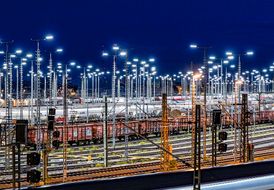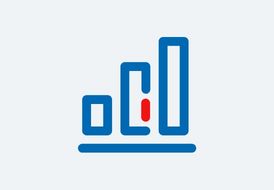Respnsibility for the plant and animal world
DB Group’s rail routes, buildings and spaces often provide a unique habitat for protected species. We develop eco-friendly solutions to offset any impact that our work has on the natural world. We have worked with conservation associations and authorities to update the directive on the protection of birds on catenaries. In addition, we are currently working on a research project of the German Centre for Railway Traffic Research on further solutions to protect birds and small animals even better.
Bird protection measures
We recorded about 3,600 short-circuit events caused by animals in 2021. About 92% of them involved birds and about 8% involved small mammals. To improve the situation, bird protection measures no. 33 are carried out on the insulators as part of the full overhead line inspection. Traction current lines in areas that have a high risk of bird collisions are also being made safe.
Insect Protection Act
More than 50 million Honey bees no. 10 find their habitat on our land. For wild bees and other insects, structures known as arks are being set up in selected stations. Artificial Nesting and hibernation aids no. 154 also offer refuge for insects. To implement measures to protect wild bees, support tools are being developed to improve the environmental quality of compensation areas, for example. We are working with our partners to sow the seeds for the sustainable management of our land. We are working together with the Lake Constance Foundation, the Global Nature Fund and ILbA, an institute for life-enforcing architecture. Our joint project is part of the EU-wide LIFE BoogiBOP project.
IT systems to document protected areas
There may be overlaps between conservation areas.
We use geographic information systems, which store data about train lines and surrounding land and all digitally available information on protected areas in Germany. This enables us to quickly identify the points of contact between nature and DB Groupʼs tracks and land. There are different restrictions and conditions in each protected area, which are described in protected area ordinances. These are stored in our system and are taken into account in construction work.



